It’s January, and I know that a lot of us are in the midst of New Year’s resolutions. For some, it’s eating healthier, or exercising more, quitting smoking, or drinking less. Maybe you think New Year’s resolutions are silly, or maybe you haven’t found one worth committing to just yet. Last year, as I was preparing for my daughter’s arrival, I resolved to be more conscious about my spending, and I knew a great place to start would be the grocery store. My 10 month old daughter, Scarlett, has her own resolution already!
 The cost of groceries has skyrocketed in the last several years. Even if you just purchase staples like eggs and butter, you know what I’m talking about. In December of 2023, a pound of butter averaged $4.50. That’s up more than 35% from three years ago! The cost of eggs more than doubled between 2022 and 2023, in part due to the bird flu. I’m shocked when I see that a pound of bacon is regularly $9.99. Lots of things impact the cost of groceries including political turmoil, weather, and feed and fertilizer costs. Grocery costs impact your spending at home, but they also impact your spending when you eat out at restaurants as businesses have had to increase prices just to keep up with increasing costs.
The cost of groceries has skyrocketed in the last several years. Even if you just purchase staples like eggs and butter, you know what I’m talking about. In December of 2023, a pound of butter averaged $4.50. That’s up more than 35% from three years ago! The cost of eggs more than doubled between 2022 and 2023, in part due to the bird flu. I’m shocked when I see that a pound of bacon is regularly $9.99. Lots of things impact the cost of groceries including political turmoil, weather, and feed and fertilizer costs. Grocery costs impact your spending at home, but they also impact your spending when you eat out at restaurants as businesses have had to increase prices just to keep up with increasing costs.
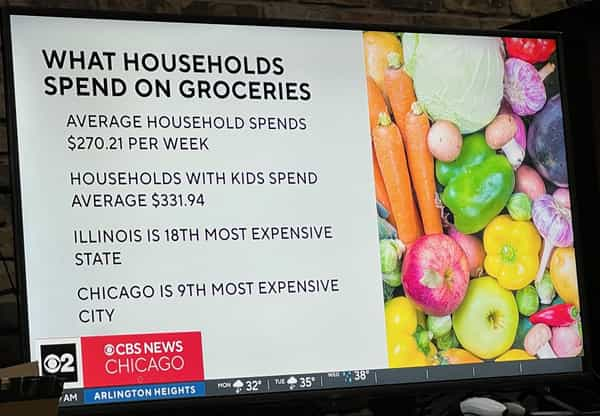
Grocery prices rose 11.4% in 2022. Illinois is right in the middle (31 to be exact) in regards to costs of groceries by state. The average monthly cost of groceries per person in Illinois is roughly $325! That’s roughly $4000 per person annually (and if you have teenagers, you know it can be much more)! Hawaii has the highest average spend, and New Hampshire the lowest. According to the USDA, in 2022, people spent an average of 11.3% of disposable personal income on food, including eating out. Groceries account for an average of 68% of food spend so saving in the grocery store can really make a huge difference financially.
I’ve always gotten a thrill from getting a good deal – I love shopping at Marshall’s, collecting and using rewards points on purchases, and learned the value of a coupon from my mom early on (thanks, Mom!). I knew this frugal mindset could apply to the grocery store - I just had to be savvy. I happen to enjoy grocery shopping, but I know for many people, it can really be a chore. I hope that these few simple changes can help you save money and make the grocery store experience more approachable, and more fun.
1. Make a Budget
Take a look at what you’re currently spending and create a manageable goal to spend less. Maybe it’s 5%, maybe it’s 10%, but whatever it is will make a meaningful difference.
Not sure what your budget should be? The USDA publishes monthly budgets with different options such as low cost, moderate cost, and liberal cost. I’ve included an example below which allows you to consider the number and ages of people in your household accordingly.
2. Be Mindful of Credit Card Offers
Even how you pay can save you money. Credit cards often offer extra points for grocery or gas purchases, for example. Pay attention to those offers, so you can get extra points for money you’d be spending anyway! In January, one of my credit cards offered 5x points for grocery and gas purchases. I’ve purchased the majority of my daughter’s first year of clothes for 90% off thanks to my Banana Republic/Old Navy points!

3. Use Grocery Apps
Download your local grocery store app and sign up for the reward program.
Living in Chicago, I’m lucky to have access to four major grocery stores, and a Costco, within a mile of my house, so I have lots of apps and options. If having multiple is overwhelming, start with one.
As you can see, in just the first two weeks of January, I’ve saved $57.36, at one grocery store. In three years, I’ve saved almost $2000.
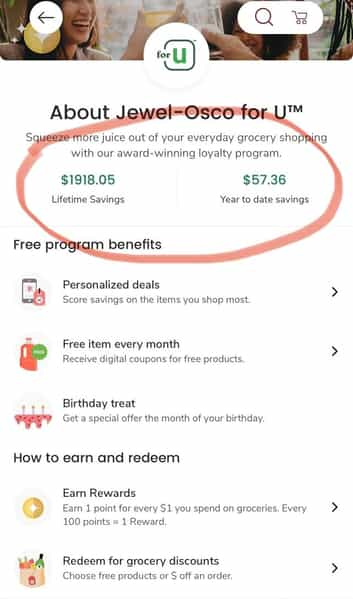 Signing up for the app will allow you access to exclusive savings, and will make sure your expenditure counts towards rewards which usually get you free groceries or take money off your bill. I even get offers for free items several times per month.
Signing up for the app will allow you access to exclusive savings, and will make sure your expenditure counts towards rewards which usually get you free groceries or take money off your bill. I even get offers for free items several times per month.
4. Start Couponing and Checking Sales Circulars
Check out the weekly sales circulars (either in the app or paper, if you prefer) and note when they are active. Most of my grocery stores put out their sales circulars on Tuesday, and they are active on Wednesday. I typically spend about 10-15 minutes reviewing the ad and then “clipping” or clicking on coupons to apply when I do my shopping. You can certainly clip paper coupons, I just find that it takes longer, and I’m apt to lose them. Once you clip the deals to your app, all you need to do is enter your phone number at the grocery store.
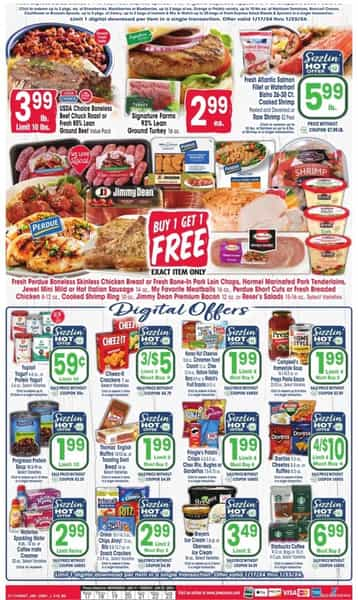
5. Make a Shopping List and Plan Your Meals
You’re more apt to overspend if you go grocery shopping without a plan, and without a list. Make a list based off of the sales circular, and based off your home inventory (especially your freezer and pantry). I won’t admit how many times I’ve bought something and realize I already have some at home. Stick to the list when you shop, and don’t shop hungry!
Rather than choosing recipes and then shopping to fit those meals, plan your meals for the week based off the grocery store sales ad and what you have on hand. For example, last week, my grocery store had pub burgers on sale for $1 each, if you clipped the coupon in the app (normally $3 each, then on sale for $2 each) with a limit of eight.
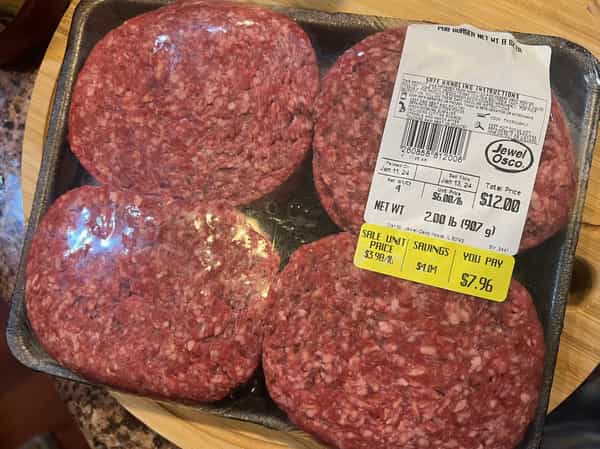 The burgers were 8oz each, so that meant I could buy four pounds of ground beef for $8, much cheaper than buying in the typical package where it was $4.50/lb. I didn’t need four pounds, but I turned two pounds into meatloaf, and froze the remainder for other meals.
The burgers were 8oz each, so that meant I could buy four pounds of ground beef for $8, much cheaper than buying in the typical package where it was $4.50/lb. I didn’t need four pounds, but I turned two pounds into meatloaf, and froze the remainder for other meals.
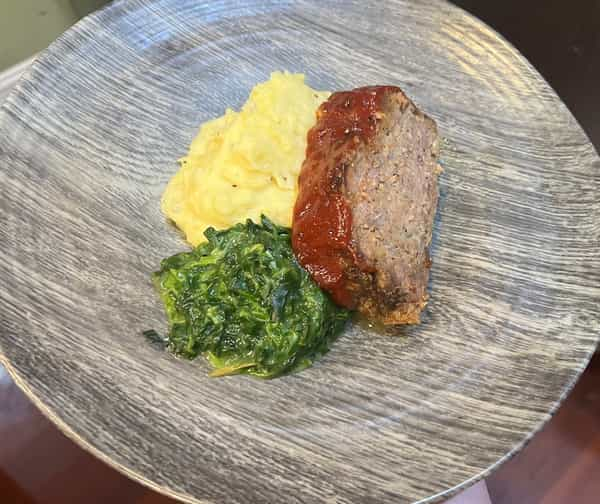
5. Make time to shop thoughtfully and look for signage
It’s hard to save when you’re in a rush and don’t have time to look at and compare prices amongst similar items. (Even better if you have time to compare prices between stores!) Look for sale signs – they’re typically big and bright, but also pay attention to limits or restrictions. I also think it’s important to mention that most of the time if a sign says “2 for $3” – you don’t have to buy two. You can buy one at $1.50. Also be sure to check your clearance section (especially after holidays!), or meat section for special as meat is sometimes half price – just be prepared to cook it that day!
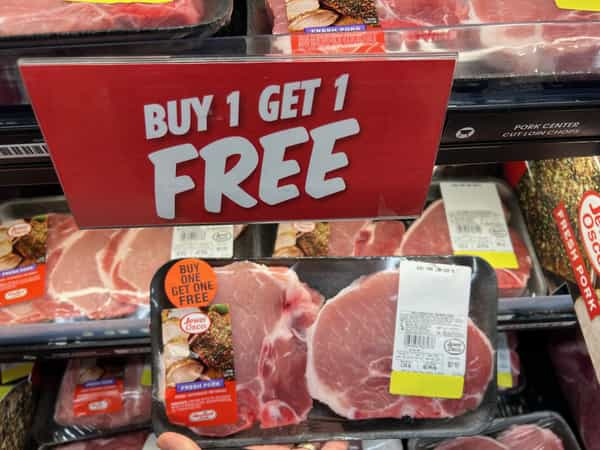
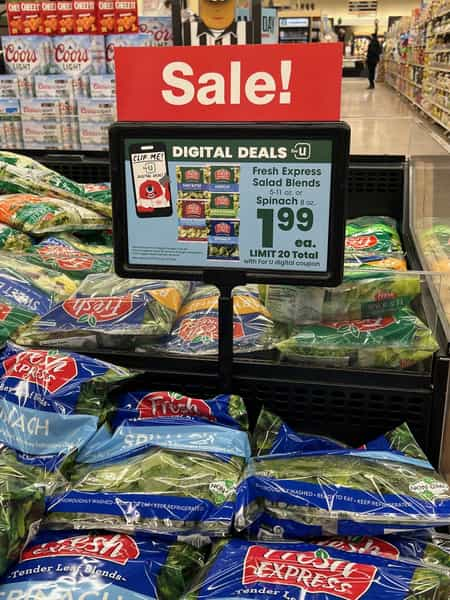
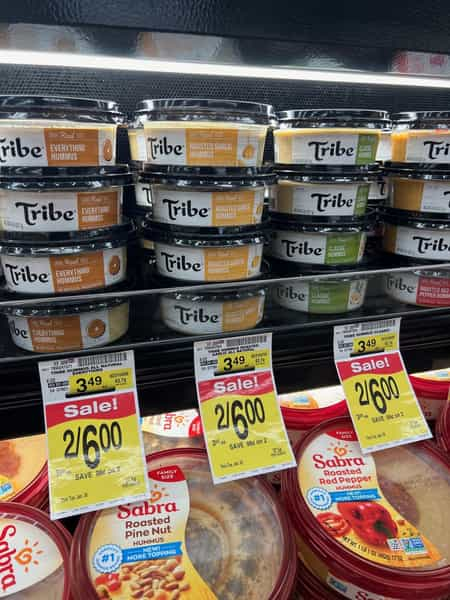 Buy in bulk if it makes sense, but be mindful of not being wasteful, as that just undermines your efforts to save! Buying in bulk can often be cheaper and allow you to meal prep so you have meals ready to go in the freezer, or so you can freeze the ingredients themselves for future meals in the weeks and months ahead. Even looking at milk, you could buy a quart for $2.29 ($0.07/oz), a half gallon for $2.99 ($0.05/oz), or a gallon for $3.99 ($0.03/oz).
Buy in bulk if it makes sense, but be mindful of not being wasteful, as that just undermines your efforts to save! Buying in bulk can often be cheaper and allow you to meal prep so you have meals ready to go in the freezer, or so you can freeze the ingredients themselves for future meals in the weeks and months ahead. Even looking at milk, you could buy a quart for $2.29 ($0.07/oz), a half gallon for $2.99 ($0.05/oz), or a gallon for $3.99 ($0.03/oz).
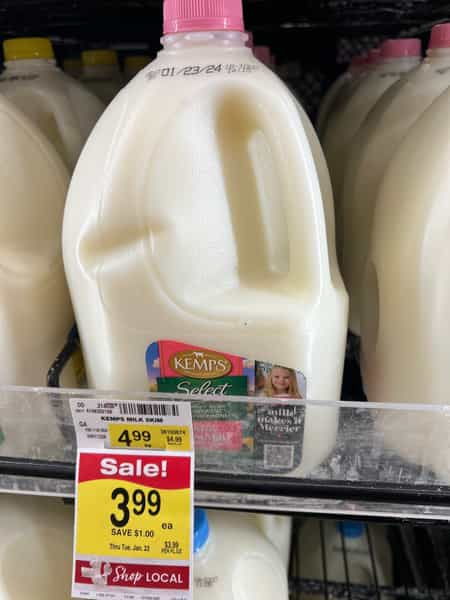
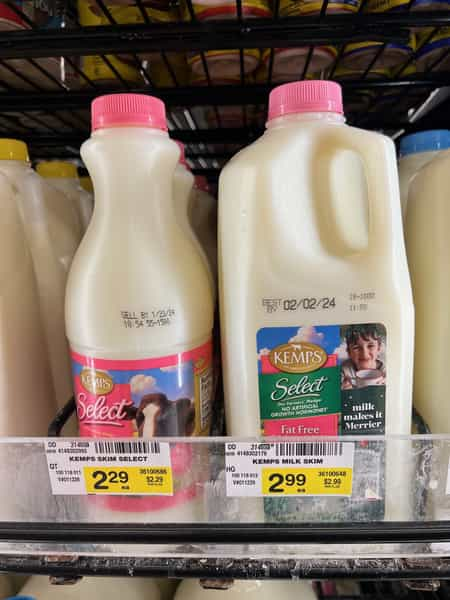 I hope that you’ve found some useful tips and tricks that make your trips to the grocery store much more enjoyable and much less expensive.
I hope that you’ve found some useful tips and tricks that make your trips to the grocery store much more enjoyable and much less expensive.
 After all, grocery shopping is the first step of a successful and fun cooking experience! It also helps to have an expansive repertoire of recipes that you can rely on so that you can take advantage of all those sales at the grocery store. Come learn some delicious new recipes in our upcoming classes:
After all, grocery shopping is the first step of a successful and fun cooking experience! It also helps to have an expansive repertoire of recipes that you can rely on so that you can take advantage of all those sales at the grocery store. Come learn some delicious new recipes in our upcoming classes:
- Culinary Adventure: Trip to Morocco Thursday, January 25 6pm
- Date Night: Gastropub Thursday, January 25 6pm
- Indian Vegetarian Friday, January 26 6pm
- Mediterranean Mezze Tuesday, January 30 6pm
- Knife Skills Wednesday, January 31 6pm











